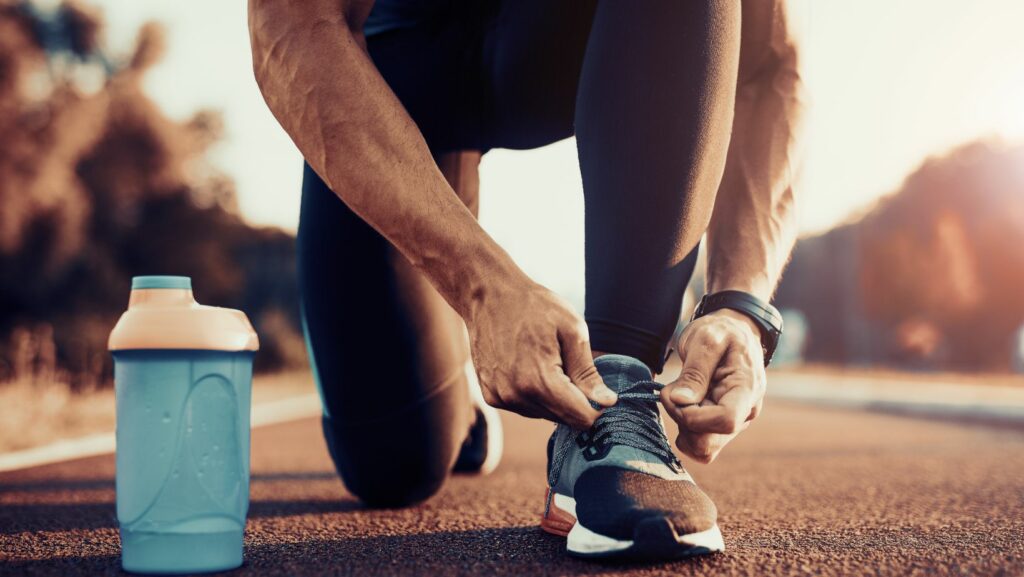Running Sports Shoes for Men
- Importance of Fit: A proper fit is crucial for comfort and injury prevention; runners should try various widths and sizes to find the best match.
- Cushioning Technology Matters: Advanced cushioning technologies absorb impact and protect joints, making them essential for comfort-focused runners.
- Stability and Support Features: Shoes with stability and support are vital for overpronators, maintaining proper foot alignment and reducing injury risk.

- Durability and Material Quality: Look for high-quality materials like breathable mesh uppers and durable outsoles to ensure longevity and performance across varied running surfaces.
- Different Types of Shoes for Unique Needs: Understanding the differences between road running shoes, trail running shoes, and racing flats can help runners select the best pair for their running style and environment.
- Top Brands and Their Innovations: Leading brands such as Nike and ASICS integrate innovative technologies and designs, catering to a variety of runner preferences and requirements.
Choosing the right running shoes can make all the difference in a man’s performance and comfort. With countless options flooding the market, it’s essential to find a pair that not only fits well but also supports individual running styles and needs. Whether he’s hitting the pavement for a casual jog or training for a marathon, the right footwear can enhance his experience and help prevent injuries.
Modern running shoes are designed with advanced technology to provide cushioning, stability, and breathability. They cater to various foot types and running surfaces, making it crucial for him to understand what features to look for. This guide will explore the best running sports shoes for men, ensuring he finds the perfect match for his running journey.
Overview of Running Sports Shoes for Men
Running sports shoes for men come in various styles, each designed to meet specific needs. The primary function of these shoes is to provide optimal comfort and support during physical activity. Features like cushioning, stability, and breathability play vital roles in the performance of running shoes.
Types of Running Shoes
- Cushioning Shoes: Best suited for runners seeking soft landings. They often feature thick padding to absorb shock and reduce impact.
- Stability Shoes: Designed for overpronators, these shoes offer enhanced support and alignment. They help maintain proper foot positioning to prevent injuries.
- Motion Control Shoes: Ideal for severe overpronators, these shoes provide maximum support and prevent excessive movement of the foot. They often feature firmer cushioning.
- Minimalist Shoes: These shoes promote a natural running style with less cushioning and a lower heel-to-toe drop. They aim to strengthen foot muscles and improve balance.
- Fit: A proper fit ensures comfort and reduces the risk of blisters or other injuries. Runners should consider trying shoes with varying widths and sizes to find the best match.
- Weight: Lighter shoes enhance speed, while heavier models often provide more cushioning. Choosing the right weight depends on individual preferences and running goals.
- Material: Breathable mesh uppers keep feet cool and dry. Durable outsoles provide traction on various running surfaces, such as trails and roads.
- Technological Innovations: Many brands incorporate advanced technology in their designs, such as responsive foams, shock-absorbing gels, and engineered mesh for enhanced performance.
Selecting the right running sports shoes involves evaluating personal running habits and considering the specific features that best meet individual needs. The variety available in the market offers ample choices for every type of runner.
Key Features to Consider
Selecting the right running shoes involves multiple factors that enhance performance and comfort. Key features include cushioning technology, stability and support, and durability and materials.
Cushioning Technology
Cushioning technology absorbs impact, protecting joints during runs. Look for shoes that feature gel, foam, or air cushioning systems to provide shock absorption. Cushioned shoes suit runners who prioritize comfort and soft landings. Brands like Nike and ASICS offer advanced cushioning options tailored to various foot types.
Stability and Support
Stability and support features help maintain proper foot alignment. Shoes designed with a medial post or support frame assist overpronators, reducing the risk of injury. Consider stability shoes if running often leads to discomfort or balance issues. Popular models from Brooks and Saucony provide excellent support for varied running styles.
Durability and Materials
Durability ensures long-lasting performance under diverse conditions. Examine outsole materials, such as rubber or blown rubber, as they contribute to grip and wear resistance. Mesh uppers enhance breathability while promoting lightweight construction. Shoes made from high-quality materials, like carbon rubber, offer better longevity for consistent runners. Look for models from New Balance and Hoka One One that emphasize durability without sacrificing comfort.
Types of Running Sports Shoes
Various types of running shoes cater to different surfaces and performance needs. Understanding these categories aids in selecting the right pair for individual running styles and environments.
Road Running Shoes
Road running shoes suit pavement and other hard surfaces. They feature lightweight construction, ample cushioning, and flexibility, allowing for quick transitions. These shoes often employ responsive foam materials that enhance energy return, promoting an efficient running experience. Popular models from brands like Nike and Brooks offer targeted support, optimizing comfort and performance on long-distance runs.
Trail Running Shoes
Trail running shoes are designed for off-road conditions, featuring aggressive treads for better traction on uneven terrain. These shoes provide enhanced durability and protection against rocks, roots, and other obstacles. With waterproof or water-resistant materials, many models ensure comfort in wet conditions. Brands such as Salomon and Hoka One One deliver trail shoes that combine stability and cushioning to tackle challenging environments effectively.
Racing Flats
Racing flats prioritize speed and performance, making them ideal for competition and faster training sessions. These lightweight shoes often feature minimal cushioning and drop to facilitate a more natural running style. They enhance responsiveness and allow for quick foot turnover. Brands like Saucony and New Balance produce racing flats that excel in providing a direct connection to the ground, supporting optimal speed during races.
Popular Brands and Models
Many brands lead the market with innovative running shoe designs that combine comfort, support, and performance. Below are details of some prominent brands and their features.
Brand A: Features and Reviews
Nike
Nike offers a range of models known for their lightweight design and responsive cushioning. The Nike Air Zoom Pegasus series features Zoom Air units for impact absorption and a breathable upper for enhanced comfort. Customer reviews highlight its versatility for both daily training and casual wear, with many praising its durability and iconic style.
Brand B: Features and Reviews
ASICS
 ASICS focuses on integrating advanced technologies for optimal performance. The GEL-Kayano series is particularly recognized for its stability and cushioning, supporting overpronators effectively. Reviewers often commend its balance of comfort and responsiveness, making it suitable for long-distance runs. The added GEL cushioning technology significantly enhances shock absorption, reducing the risk of injury.
ASICS focuses on integrating advanced technologies for optimal performance. The GEL-Kayano series is particularly recognized for its stability and cushioning, supporting overpronators effectively. Reviewers often commend its balance of comfort and responsiveness, making it suitable for long-distance runs. The added GEL cushioning technology significantly enhances shock absorption, reducing the risk of injury.
Performance and Comfort
Finding the right running shoes is crucial for any man looking to enhance his performance and comfort. By considering factors like fit cushioning and stability, he can select a pair that aligns with his unique running style and goals.
With numerous options available from trusted brands, it’s easier than ever to find shoes tailored to specific needs whether he’s hitting the pavement or tackling rugged trails. Investing time in choosing the right footwear not only improves running efficiency but also helps prevent injuries.
Ultimately, the right pair of running shoes can make all the difference in achieving personal bests and enjoying every step of the journey.

